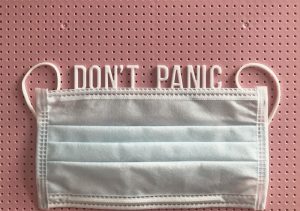 Before you start polishing your halo, did you know that even if you think you’re more of a gym bunny than a couch potato, you’re still not immune to the side effects of a sedentary lifestyle?
Before you start polishing your halo, did you know that even if you think you’re more of a gym bunny than a couch potato, you’re still not immune to the side effects of a sedentary lifestyle?
Sitting at your desk all day, then in front of the TV in the evening, is really bad for you. Research has shown that the health side-effects include anxiety, depression, heart disease, breast and colon cancer, type 2 diabetes, high blood pressure, obesity, osteoporosis, osteoarthritis and back pain.
So, if you do have a job that involves being on your feet all day – at least it’s protecting you from some of those side-effects! Ideally, you need to be on your feet or moving for 2-4 hours a day. So what do you do if your job involves sitting at a desk?
Standing desks have been a big fad in the world of workplace wellbeing in the last few years. But anecdotal evidence shows that people end up moving them back down, perching on high stools, or coming up with other work-arounds.
These faddy solutions don’t fix the fundamental problem – we need to incorporate more movement into our days.
Vybarr Cregan-Reid, author of Primate Change: How the World We Made is Remaking Us, which looks at how our environment has changed our bodies, says: “Exercise, in these terms, is not a fad, or an option, or an add-on to our busy lifestyles: it is keeping us alive. But before it can work for us, our whole approach needs to change.”
I for one know that I spend epic stretches of the day sitting down. On a typical day I get in my car, drive to work, sit down all day, drive home, then once the kids are in bed, I sit on the sofa for the rest of the evening. I’ve been kidding myself that going downstairs at work to make a drink or go to the toilet counts as exercise. But it’s a 30-second walk. I need to do more.
Researching this topic, I found a brilliant article about incorporating more movement into your day. In it Christopher Keyes writes: “The solution to sitting isn’t to stand, though it helps… the real solution is to move. All day. The stillness is what’s killing us. We should be pacing the hallways and climbing stairs and squatting and lunging and stretching. Now that requires a radical change, one exponentially more difficult than putting your desk on stilts.”
I know from the work that Oasis does with organisations that change is really tricky. What Keyes describes is a culture change. Doing things differently is going to require all I’ve learnt on Skills for Change! Fortunately, Keyes addresses my objections in his article:
- Being reminded to move (or forgetting) can cause an increase in stress. You can use a fitness tracker to set reminders to move throughout the day, or there are apps you can download – like Movr, Fit Bolt, Stand Up, or Deskjob – to remind you to take a break or do some stretches or exercise.
- Sticking to the plan is hard. Don’t set yourself up for failure. Start small and build up gradually. The best approach is to add more movement to what you do anyway – go further, more frequently.
- Public embarrassment. Would you feel ridiculous doing lunges in the middle of your workspace? I would. Keyes got around this with what he calls “stealth exercise” – pacing while on the phone, walking round the building holding papers so it looked like he was on his way to a meeting, and doing stretches in a corner of his office where people couldn’t see him. You could also try getting everyone you work with on board – for some communal stretching? Or be bold and tell everyone what you’re doing – ignore the strange looks!
What I have found is the benefits speak for themselves. Just by moving a tiny bit more, I feel energised and less lethargic. I’m getting proper screen breaks and taking 5 minutes out means I get back to work with fresh ideas and can be more productive. And I feel oh-so-virtuous – not to be underestimated!
Here are the best of the other tips I found:
- Getting to work – obviously walking or biking is best. If you use public transport, walk to a further stop (or get off one stop early). If you drive, park as far away as you can. This counts for all driving – always park in the furthest space from the supermarket.
- Always take the stairs rather than the lift.
- Get out of your chair. Stand up when you’re on the phone, or when you have a tea break. Have walking meetings.
- Walk to see colleagues for a face-to-face chat rather than email or phone.
- When you have to walk somewhere, go a bit further. Take an extra 5 minutes to loop round the block or your building. Use the printer furthest from your desk. Use the furthest toilet.
- Sneak in some stretches, squats or standing press-ups. Find a quiet corner, an unused meeting room, or failing that, a toilet cubicle. Start by aiming for 30 seconds or one minute of movement every hour.
- Consider lunchtime fitness sessions – taking a slightly longer lunch break to walk, run, swim, or do a gym session. If there are no facilities available, find a quiet spot to do some resistance exercises or walk up and down stairs a few times.
- Instead of flopping in front of the TV with a glass of wine or chocolate when you’re tired, go for a five-minute walk round the block. Then you can flop – but you’ll feel loads better for doing the walk first.











